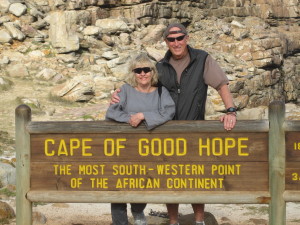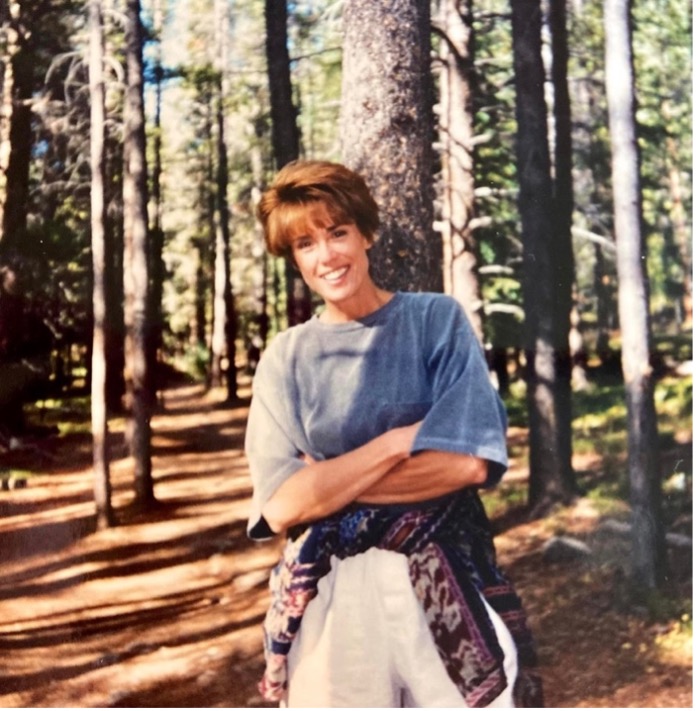On the 50th anniversary of Ms. magazine, the cover article of the New York Times Sunday Review was, “The Feminist Malaise: Where is the women’s movement when we need it most?” Included were three articles reflecting the movement’s diminishing vitality. Ms. captured the zeitgeist of a time now past but has been replaced by other isms – Trumpism, racism, fascism, authoritarianism and others. For years it drew our attention to “feminist” issues, but change is the only constant over time.
Today, magazine publishing is undergoing a tectonic shift. The Internet has taken its domain. Playboy is gone and Ms. is on life support. Though they were polar opposites, both lost their mojos for some of the same reasons. But even before Playboy was a historical footnote, Me Too was coming on strong, the current iteration of the “feminine mystique.” Ms. in its time, was the print platform for women seeking equity in the workplace, home, politics, military, and the arts. It created a community and gave voice to their concerns.
But time changes things. This is not 1972, and in spite of the today’s breathless churn of breaking news, I feel like I’m breathing the stale air of old ideas. Whether it’s politics, geopolitics, art, music, or science, the same names, faces, and ideas keep playing in an endless loop. Many of issues Ms.magazine highlighted are still with us. Equal pay for equal work. Parental leave. Childcare. Sexual harassment and the “glass ceiling.”
There’s no doubt that America has made progress in some areas. My entering law school class at UC Berkeley had only four women. Last year’s class was 62% female. The same holds true for medical schools across the country. In 2019, 50.5% of all US medical students were women.
Title IX (which I wrote about recently: https://www.jackbernardstravels.com/good-news-in-a-bad-news-cycle/) has given young women more opportunities in high school and college sports.
I flew military and commercial aircraft for 30 years before I saw a woman in the cockpit. For years the “old guard” argued it was too difficult for a woman. She didn’t have the strength to manhandle the controls in an emergency. It was all bullshit but look how long it took to get some kind of parity. Women are still underrepresented in aviation but they now hold 16.4% of all commercial airline pilot slots. That’s thousands of new jobs for women and the current shortage of pilots suggests that percentage will continue to grow dramatically.
Notwithstanding these changes and all the drivel about ”changing of the guard,” “passing the torch,” and “the time has come” – the old guard still dominates most spheres. We need to hit refresh to highlight new ideas, shifts in perspective, and new faces. Dylan said it best.
The line it is drawn
The curse it is cast
The slow one now
Will later be fast
As the present now
Will later be past
The order is rapidly changing
And the first one now
Will later be last
For the times they are a changin’
Times are “a changin’. You can feel it. Women are no longer last. Of late, three Gen-X women have captured my attention. None of them is a sudden sensation. All have paid their dues. One is a writer. One an architect. And, the third is an athlete/educator. You should know them. You may not know their names, but they are changing the landscape in their chosen fields.
Ann Patchett is a writer and best known of the three, but she didn’t exactly burst on the scene in 2001 when her best-selling novel, Bel Canto, won the PEN/Faulkner award for fiction. Four years at Sarah Lawrence, two at the Iowa Writers Workshop, nine years in the trenches at Seventeen Magazine, another few at Vogue, The New York Times Magazine, O Magazine, Gourmet, and three novels, predated her “surprise” success with Bel Canto. In addition to eight novels, four works of non-fiction, and an untold number of articles, Ms. Patchett, who lives in Nashville, and owns and operates Parnassus Books, an independent bookstore with a nationwide reputation.

As in other spheres, there was a time when women authors were marginalized and felt compelled to write anonymously (Jane Austen) or with masculine pen names (George Elliot, George Sand, Isak Dinesen). Those days are mostly past. No one would label Ms. Patchett a woman’s writer, but the pejorative “chick lit” remains as jargon for stories written from a female point of view.
Despite the number of women editors, the publishing business is still primarily a men’s club. From a gender perspective, Ann Patchett is hard to categorize. She writes from a point of view that is gender neutral. Bel Canto is a thriller with both genders well represented, Dutch House is a multi-generational family drama, and the essays focus on relationships not gender.
_____
Less well known than Ms. Patchett, but extremely influential in her field is Jeanne Gang, founder and principal of the award-winning Chicago architectural firm Studio Gang. In a skyline crowded with buildings by Mies van der Rohe, Helmut Jahn, and Louis Sullivan, Ms. Gang’s two recent skyscrapers, Aqua Tower and Residences at St. Regis have captured the imagination of critics and public alike with their remarkably creative outlines.

Aqua Tower (left) is an 87-story, mostly residential, skyscraper on Lake Shore Drive in Chicago. It was completed in 2009 but was bested in 2020 when her 101-story Residences at St. Regis (right) was completed nearby. Both designs are artistically, aesthetically, and optically adventurous. For example, though the Residences at St. Regis appear to curve in and out as the three towers stretch upward, all its lines are actually straight – an optical illusion of curvature. In addition, an open story near the top of both buildings minimizes the wind effect and giant water tanks stabilize the buildings in the famous high winds of the Windy City.
In a recent interview, Scott Simon of NPR asked Ms. Gang if anyone had ever told her she couldn’t be an architect? “Well, as a matter of fact, one of my professors told me one time, ‘you know Jeanne, it’s great that you’re studying architecture, but do you think a man really wants to hire a woman to design buildings?’” But, rather than curtail her ambition he “really got me excited, to like, prove them wrong.”
Following graduation from the University of Illinois, University of Technical Studies, Zurich, and Harvard University Graduate School of Design and prior to her founding of Studio Gang in 1997, Ms. Gang spent four years in Rotterdam working with revolutionary Dutch architect, Rem Koolhaas, (Prada store in SoHo, Seattle Public Library).
Both of her Chicago buildings have been celebrated as “the tallest woman-designed buildings in the world.” Why is there a category such as “woman-designed buildings?” These are not feminine structures. They stand alone as statements of her genius, but Ms. Gang’s professor was on to something. Architecture is still the province of men.
Although she has been a MacArthur Fellow and garnered many other awards, she has yet to receive the Pritzker Architecture Prize, the most prestigious in her field. It seems surprising since the Pritzker family and foundation are both headquartered in Chicago where her latest buildings dominate the skyline. Could it be the Pritzker family is wary of favoring a local architect? She is definitely not provincial, but like her fellow Chicagoan, Frank Lloyd Wright, she has chosen to locate much of her work in her hometown.
Despite the Pritzker oversight, another of Studio Gang’s innovative designs is the perfect lead-in for my third profile. The Canal Street Boathouse on the Chicago River is an environmentally conscious award-winning design combining an eye-catching sculptured roof with the functional use of recycled materials directing repurposed storm water to create a home for year-round youth rowing clubs.
“The boathouse’s roof drainage elements and site design together function as its stormwater management system, diverting 100 percent of runoff from the sewer. Green infrastructure—porous concrete and asphalt, native plantings, gravel beds, and bioswales (rain gardens)—is used to store and filter runoff before slowly releasing this filtered water back into the river. Existing habitats were maintained and strengthened with a mix of native grass, plants, and trees, and silt fabric prevented compaction and erosion during construction. These efforts serve as a model for softening the river’s edge, supporting its ongoing revitalization.”

The Canal Street Boathouse is the perfect segue to my third profile, Julie McCleery, PhD.. Julie was a collegiate and post-collegiate rower before she became a university professor. She also coached for the US National Rowing Team and the Pocock Rowing Center in Seattle. Her educational quest took her from Georgetown (B.A.) to Harvard (M.Ed.) and the University of Washington (PhD.), and on the way, she taught high school, worked for an educational non-profit, and had her own educational consulting practice. She currently serves as Director of Research-Practice Partnerships for the University of Washington’s Center for Leadership in Athletics, where she teaches courses such as Coaching Philosophy and Pedagogy and Sports Coach as Leader. Her research focuses on practices of highly effective coaches and youth sports

In the interest of full disclosure, she is also a friend. We met when we were both working at the Alliance for Education, a non-profit that supports and fosters change in Seattle Public Schools. I remember how smart and dedicated she was, but the thing I remember most is that before her long workday at the Alliance, she was coaching rowing at 5:30 a.m. every morning, rain or shine, on Lake Washington – working with athletes training for the US National Team. Just a few years previous, she had been on the US team and trained for the 2000 Olympic trials. She and her rowing partner did not make that team, but she accepted the disappointment and moved seamlessly onto coaching other aspiring athletes.
_____
Is there a “glass ceiling?” Of course, there is. How else can we explain why only 8.2% of Fortune 500 companies have women CEOs or why America has never had a woman president? We are not alone, but we are in the minority among developed countries. In the last 70 years these women have served as heads of state: Golda Meir – Israel (1969). Margaret Thatcher – UK (1979). Indira Gandhi – India (1980). Angela Merkel – Germany (2005). Benazir Bhutto – Pakistan (1988). Yes, even Pakistan has had a woman chief executive.
I’ve chosen these three women to profile for the next generation of leaders. All three are women in their 50s, and all three are at the top of their game – building, writing, educating and coaching. The question always surfaces…can you have it all? I don’t know the answer. All three are married. Two of the three have opted for lives without children. Patchett has spoken about it as a conscious choice. Julie has three of her own and has made it work though I know it hasn’t been easy. Does she have it all? It seems so, but that’s from my vantage point on the outside.
I chose to highlight these women as successful examples of their generation – not just because they’re women – but for their successes. I’ve read and admired much of Ms. Patchett’s fiction and non-fiction. I’m in awe of Ms. Gang’s futuristic, environmentally sound architecture, and I admire Ms. McCleery’s in the trenches work with teachers, coaches, and students.
When I was young, I wanted big change NOW! It took years for me to accept the snail’s pace of incremental change. Slow and steady made sense, but as Dylan says, The times they are a changin’ and the tech revolution has accelerated that change. Maybe we need to shift our thinking to a new model. We should venerate those that have inspired us but look to new leaders, like these three, for fresh ideas and approaches to today’s problems. It’s time to hit “refresh.”
It should be noted that all three of the women profiled have chosen to live and work in their hometowns, not the biggest or most upwardly mobile urban centers in the country. Ann Patchett moved to Nashville when she was 6 years-old and stayed. Jeanne Gang was born in Belleville, Illinois, attended the University of Illinois and headquartered her business in Chicago. And for 35 years, Julie McCleery has lived and worked in Seattle where she rowed, studied, taught, coached, and raised her three boys. These are women who remind us that if you know who you are you don’t need New York, Los Angeles, or San Francisco to be influential. Fresh ideas can come from anywhere. This is what Ms. 2.0 looks like.
Postscript: This essay is dedicated to Nora Ephron (1941-2012), a transitional figure who overlapped Ms 1.0 and 2.0. but died much too soon. A terrific new biography, by Kristin Marguerite Doidge titled simply Nora Ephron was released earlier this month.

































I certainly applaud the progress woman have made in our life time and I can only hope it continues, but with that being said the Biden administration is taking girls and woman rights a step backward. Title IX was a very important step forward. The absolute bizarre idea of including transgenders into girls and woman sports on a equal basis is completely moving in the wrong direction.
No problem with transgenders competing in the same events as long as it is a separate category.
With a daughter who has been in competitive swimming from age 6 I can say from personal experience attending multiple swim meets the difference between male and female is clearly evident. FINA certainly made the right decision.